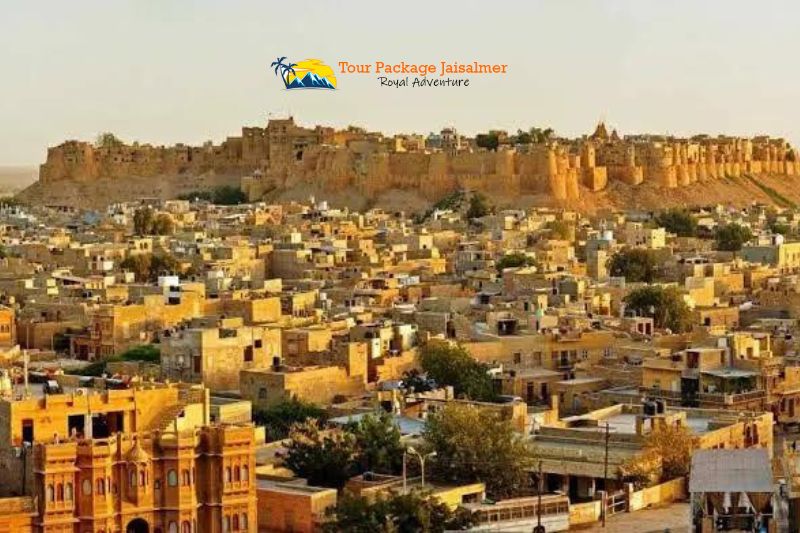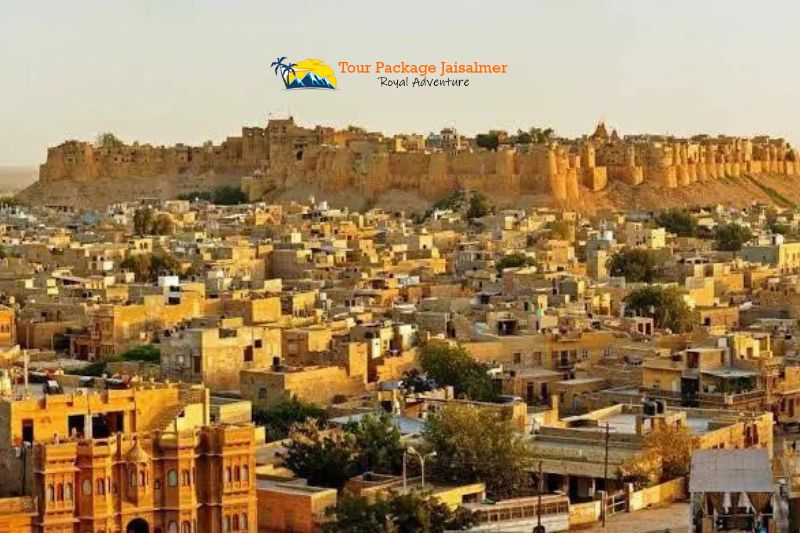
The “Golden City” of Rajasthan, Jaisalmer, is well known for its magnificent sandstone architecture, huge deserts, and extensive cultural history. At the heart of this enchanting city lies a living testament to history and heritage – the Jaisalmer Fort. Unlike other forts that stand as silent relics, the Jaisalmer Fort is a thriving urban center where life pulsates amidst ancient walls. In thisexploration, Tour Package Jaisalmer unveil the captivating world within the living fort of Jaisalmer, where history, tradition, and modernity intertwine to create a unique and vibrant community.
Historical Tapestry:
Built in the 12th century by Rawal Jaisal, the fort’s founder, the Jaisalmer Fort stands proudly atop the Trikuta Hill, casting a watchful gaze over the city below. The fort’s distinctive honey-hued sandstone walls have earned it the moniker of the “Golden Fort.” Walking through its massive gates is like stepping back in time, as the narrow alleys, intricately carved havelis (traditional Indian mansions), and ancient temples echo the stories of bygone eras.
A Living Abode:
What sets the Jaisalmer Fort apart is that it isn’t just a historical relic; it’s a vibrant living community. Within its walls, nearly a quarter of the city’s population resides, making it one of the few living forts in the world. The residents, many of whom are descendants of the fort’s original builders, live their lives amidst the echoes of history, a testament to their enduring connection with their heritage.
Cultural Mosaic:
Life within the living fort is a microcosm of India’s diverse culture. The fort is a melting pot of languages, traditions, and communities. While the Rajputs have been its original inhabitants, over the centuries, traders, artisans, and various other groups have settled within its walls. This amalgamation is reflected in the fort’s vibrant markets, where you can find everything from traditional Rajasthani crafts to contemporary fashion.
Labyrinthine Alleys and Havelis:
Navigating the labyrinthine alleys of the fort is an adventure in itself. The alleys are so narrow that in some places, only a single person can pass through at a time. As you walk through these alleys, you’ll discover exquisite havelis that boast intricate architecture and stunning facades. The Patwon Ki Haveli, Nathmal Ki Haveli, and Salim Singh Ki Haveli are just a few examples of these architectural wonders that offer a glimpse into the opulent lifestyles of the past.
Preservation Efforts:
Despite the fort’s living status, preservation of its heritage remains a challenge. The UNESCO World Heritage Site status bestowed upon the fort has brought attention to the need for conservation. Balancing modern amenities with the preservation of ancient structures is a delicate task, and efforts are being made to ensure that the fort’s unique identity isn’t compromised.
Local Commerce and Cuisine:
The living fort is a thriving hub of commerce. Shops and stalls line the alleys, offering everything from textiles to jewelry to souvenirs. The fort is also a gastronomic delight, with numerous eateries serving traditional Rajasthani cuisine and flavors from around India. Rooftop restaurants provide stunning views of the city below, making dining a truly atmospheric experience.
Festivals and Celebrations:
The fort comes alive during festivals and celebrations. Diwali, Holi, and the Desert Festival are occasions when the fort is adorned with lights, colors, and music. These celebrations bring the community together, showcasing the fort’s vibrant spirit and sense of unity.
Modern Necessities:
While the fort is steeped in history, it’s not stuck in the past. Residents have adapted to modern necessities, with electricity, water supply, and other amenities present within the fort. However, efforts are made to ensure that modernization doesn’t overshadow the fort’s cultural and historical significance.
An Evolving Identity:
As the world changes, so does the living fort. It evolves with the times while holding on to its roots. The living fort of Jaisalmer is a testament to the resilience of heritage in the face of progress, and a reminder that even ancient walls can house vibrant dreams.
Conclusion:
The living fort of Jaisalmer is a world within itself, where history and modernity coexist in harmony. It’s a place where time seems to stand still, where stories of the past merge seamlessly with the aspirations of the present. As you wander through its alleys, engage with its people, and witness the daily life that unfolds against a backdrop of ancient sandstone, you’re not just exploring a fort – you’re immersing yourself in a living saga of resilience, tradition, and the undying spirit of Jaisalmer.


